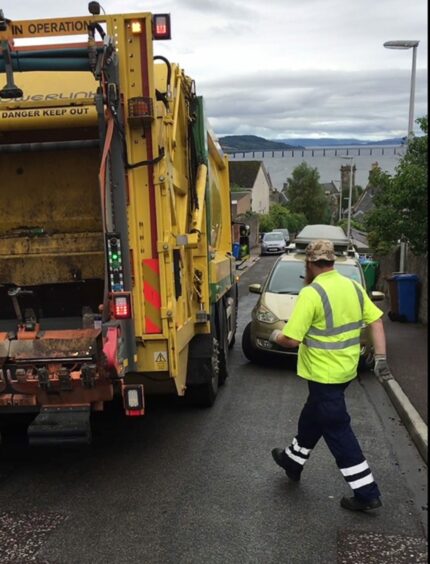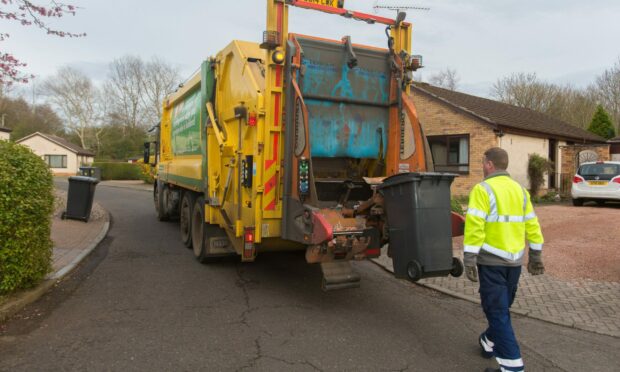Fife residents will have to wait a bit longer before noisy, fossil fuel guzzling bin lorries are a thing of the past.
The region’s local authority has purchased 13 diesel waste collection vehicles.
A Fife Council waste operations boss said there is not enough charging infrastructure in the region to support electric vehicles (EVs).
In response, Green MSP Mark Ruskell accused Fife Council of “doubling down on diesel” during the climate crisis.
“If Fife Council are serious about delivering on their climate ambitions, they should focus their energies on greening their fleet, rather than doubling down on dirty diesel vehicles,” he says.
“Other councils such as Dundee are trialling electric bin lorries. Fife should also rise to the challenge.”
Why are electric bin lorries better?
Electric bin lorries are a relatively new addition to public services.
They can benefit both residents and the councils that run them.
In addition to preventing air pollution, they are also quieter.
So good news if you’re regularly woken up by the morning bin collection.
Dundee City Council – regarded as one of Scotland’s leading authorities for promoting EVs – has six electric bin lorries.
But there aren’t many across Scotland.
Glasgow, the host city of COP26, only took delivery of its first fully electric bin lorry in October last year – in the weeks before the summit.
And Fife isn’t ready to invest in them yet.
What’s stopping Fife from joining the EV revolution?
Sandy Anderson is service manager for Fife Council’s waste operations.
“We don’t have the charging infrastructure in place across Fife to cope with electric refuse collection vehicles,” he says.

In particular, north east Fife is mostly rural and seriously lacking charging points.
Sandy adds that current EV technology means an electric bin lorry would be unable to complete a full day in north east Fife without needing recharged.
He says the council is “waiting on the technology improving”.
There is also an issue with electricity supply, says Sandy.
A new substation would need to be built at the council’s Bankhead depot before the council could charge up a fleet of bin lorries stationed there.
Fife is replacing an ageing fleet
The council has had to act quickly to replace its fleet as its ageing vehicles struggle to do their rounds.
In recent days there have been a ‘high number vehicle breakdowns’.
It is understood the council has not been able to repair broken down bin lorries because of a lack of spare parts.
In the meantime, the council has invested in bin lorries with “the most up to date fuel efficient diesel engines”.
Sandy adds that the council’s ultimate aim in years to come is to run a carbon neutral fleet.
“We are also commissioning a heavy duty electric charger at our Bankhead depot and we hope to trial an electric demonstrator lorry later this year.
Hydrogen fuel cells are also being considered as alternative cleaner fuel options.”
What about the cost?
Electric bin lorries are expensive.
Fife’s new vehicles cost around £180,000 each.
In contrast, an electric bin lorry could be as much as £500,000.
But a Transport Scotland spokesperson says there is support for authorities looking to go fossil fuel free.
“It’s important that the public sector is confident to lead from the front when it comes to decarbonising their fleets.”











Conversation